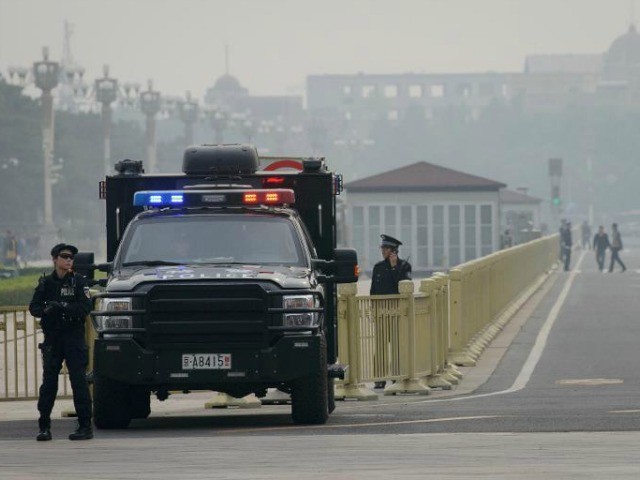A total of 11 people died in an “attack” in China’s Xinjiang region on Friday, with eight “terrorists” shot dead by police and three blowing themselves up, having injured four people, authorities said.
The incident in Aksu prefecture is the latest violence in the restive region home to mostly Muslim ethnic Uighurs.
Riding motorbikes and cars carrying LNG cylinders, the group approached police officers near a park in Wushi county as they prepared to go on patrol, it said.
The Tianshan web portal, which is run by the Xinjiang government, said that the 11 attackers were killed, while two police and two passersby were injured and one assailant detained. Photos posted on the site showed a charred police van and jeep.
Xinjiang police and information officers reached by phone declined to comment to AFP. Wushi government and police officials could not be reached.
Aksu, in the far west of Xinjiang near the border with Kyrgyzstan, was the scene of triple explosions in late January that killed at least three people, according to Tianshan. Police shot dead six people soon afterwards.
Xinhua, citing a police investigation, described those blasts as “organised, premeditated terrorist attacks”.
The vast and resource-rich region of Xinjiang has for years been hit by occasional unrest carried out by Uighurs, which rights groups say is driven by cultural oppression, intrusive security measures and immigration by Han Chinese.
Authorities routinely attribute such incidents to “terrorists”, and argue that China faces a violent separatist movement in the area motivated by religious extremism and linked to foreign terrorist groups.
But experts question the strength of any resistance movement, and information in the area is hard to independently verify.
A spokesman for the overseas World Uyghur Congress, Dilshat Rexit, blamed the latest incident on what he called China’s violent policies.
The most serious recent incident took place in Turpan last June, leaving at least 35 people dead.
In October three family members from Xinjiang died when they drove a car into crowds of tourists in Tiananmen Square in Beijing, the symbolic heart of the Chinese state, killing two, before the vehicle burst into flames, according to authorities.
China’s top security official Meng Jianzhu said days later that the attackers had “behind-the-scenes supporters” belonging to the East Turkestan Islamic Movement (ETIM) based outside the country.
The United States and the United Nations both categorised ETIM as a terrorist organisation in 2002, during a period of increased US-Chinese cooperation following the 9/11 attacks.
But the group’s strength and links to global terrorism are murky, and some experts say China exaggerates its threat to justify tough security measures in Xinjiang.
Last month police arrested the prominent Beijing-based Uighur scholar Ilham Tohti, a rare outspoken critic of the government’s policies towards the ethnic group, accusing him of being involved in separatist activities.
Xinjiang — which covers a sixth of China’s territory — contains 30 percent of China’s onshore oil and gas deposits and 40 percent of its coal, according to the official website china.org.
As of 2011 Uighurs made up 47 percent of the population and Han Chinese 38 percent, according to official Xinjiang figures. In 1949 by contrast Han, China’s dominant majority, accounted for six percent.
The region has seen tremendous economic growth, but critics argue that the development mainly benefits the influx of Han Chinese.
Clashes involving Uighurs and Han in the region’s capital of Urumqi in 2009 left around 200 people dead.

COMMENTS
Please let us know if you're having issues with commenting.